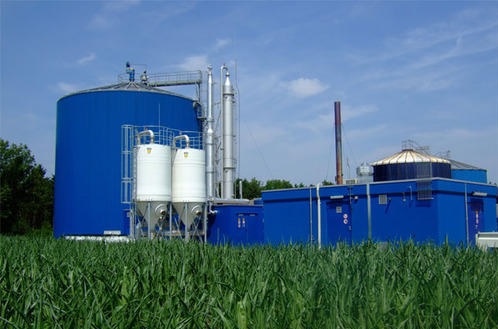Biogas is a mixture of 56% methane gas (CH4), 40% carbon dioxide (C02) and rest, a mixture of H2, H2S and N2.
It is produced by digestion, Pyrolysis and hydro gasification in a specific plant called as Biogas Plant.
Biogas plants are of various types like — Janata biogas plant, Dean Bandhu biogas plant, Khadi and Village Industries Corporation (KVIC) type biogas plant, Pragati Design biogas plant and Chinese biogas plant.
(I) Preparation of Biogas
Animal wastes, agricultural decomposable residues, water hyacinths etc. are mixed with water and fed into a ‘digester chamber’ through an inlet. Thus, these substances are gradually decomposed to produce a mixture of gases called as Biogas.
The slurry, left due to biogas generation is brought out and is used as a very good natural fertilizer for crops. China basically uses this plant to produce natural fertilizer.
(II) Advantages of Biogas.
(i) Since biogas is prepared by making use of bio-wastes, it helps in solving the problem of accumulation of decomposable wastes.
(ii) Generation and application of biogas helps in the protection of trees.
(iii) Burning of biogas causes less pollution. Thus, its application is safe for rural ladies who otherwise suffer from so many types of health problems caused due to burning of wood.
Up to the end of 1999—2000, a total of 30 lakh biogas plants have been installed. Those plants have been estimated to generate fuel gas equivalent to the saving of 30 lakh tonnes of fuel wood per year.
(III). Progress of Biogas generation in India
Of late, biogas generation in India has become quite important. The energy crisis can be overcome by large scale production of biomass and biogas in rural, semi-urban and border urban areas.
Large capacity biogas plants can be installed near dairies and ranches, and near the houses of farmers.
The Department of Non-conventional Energy Sources has launched a National Biogas Developed Programme. The installation of biogas plants is going on all over the country at block and Panchayat levels in rural areas.
About 1, 50,000 biogas plants were installed during the year 1984-85.The biomass power potential of India as per estimates up to March 2006 was about 19,500 MW.
(IV) Limitations of Biogas and Biogas Plants
Biogas contains methane in greater percentage and methane is a greenhouse gas. Thus, biogas is harmful to the health of environment if it is allowed to escape into the atmosphere. The biogas plants bear following shortcomings-
(i) Handling of slurry of biogas is a major problem for those who do not have adequate place for composting.
(ii) The bacteria associated with the digestion of raw materials in the digester are sensitive to temperature. Their activity ceases during low temperature of winter causing low production of the gas.
(iii)The mesophytic bacteria die at high temperatures i.e., temperature above 600C.
(iv)There is a problem of adding nutritional substances for bacteria digesting the matter.
(v)Generally biogas plants need to be covered by straw bags from outside during night hours. It causes problems to some owners.




